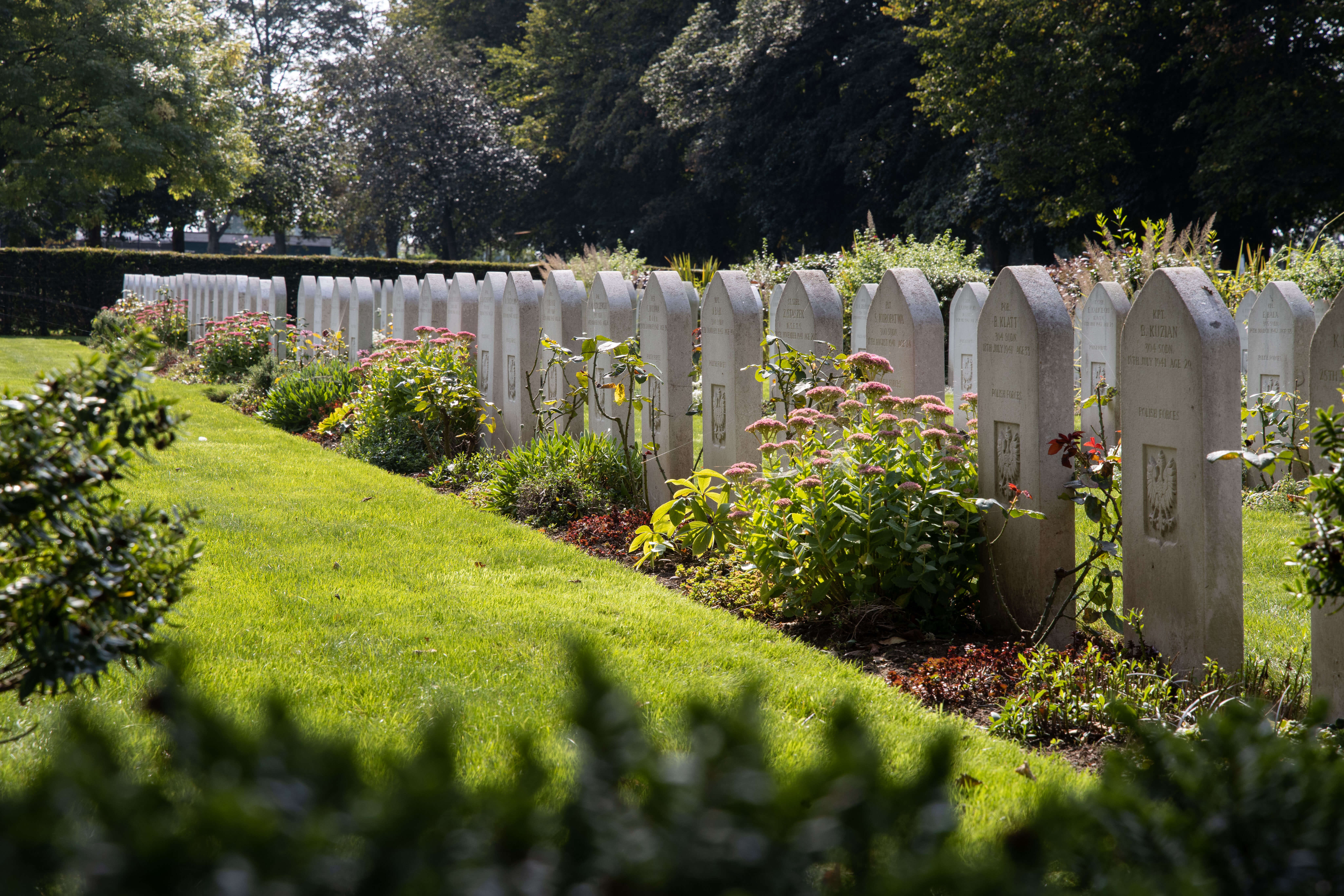11 December 2020
Forever Standing Guard at Brookwood Military Cemetery
For the past three years, two larger than life seamen who are rather weathered – but by no means any less wise, have stood within the Rose Garden, adjacent to the Canadian Building at Brookwood. But, what you might not know is where these statues came from or that they were lost for some time before being rediscovered. CWGC’s Conservation Officer, Sigourney Lee, uncovers the story.

Their story starts after the Second World War when the Commission were designing extensions to its three naval memorials at Portsmouth, Plymouth and Chatham. These sites had been chosen as points of commemoration for the navy personnel who had died during the First World War. These manning ports were the crew’s ‘home base’, and on a symbolic level was a way of bringing the sailors and marines ‘home’.
The extensions were designed by Sir Edward Maufe (the Principal Architect for the Commission) in 1946, with the sculpture work carried out by Charles Wheeler. At each site, the sculptured reliefs vary slightly in design, yet they all feature four large seaman sculptures ‘at watch’. Our Brookwood guards began their duties in 1953 at Portsmouth Naval Memorial; it was unveiled by Queen Elizabeth the Queen Mother in April, almost thirty years after her husband had unveiled the original memorial.

The four seamen sculptures – near 8ft. in height, vary in their stance, clothing and equipment – one holds a set of binoculars, the other a gun, the devil really is in the detail. Wheeler was trying to create statues that could represent all those who had fought at sea during the Second World War and in this way, they do not represent one singular naval branch.
Sir Charles Wheeler PRA specialised in both architectural and portrait sculpture, he regularly exhibited at the Royal Academy. He was in fact made president in 1956, the first sculptor to hold such a position! You may perhaps be familiar with his work on other prominent buildings such as the Bank of England and the Ministry of Defence, Whitehall.
Skip forward nearly 60 years and these seamen at Portsmouth were beginning to show the effects of life at sea – well, near it. Wind and seawater greatly impact the relatively soft Portland stone from which they are carved. There were records of noses and fingers falling away, and some of their angular features had become softened over the years.

In 2001 the Commission took the decision to replace these four larger than life statues in their entirety. It was not seen as feasible to try and rectify the weathering, the erosion was bad, and the statues had also suffered from poor repairs in the past. Often, cement had been used to re-fix a lost nose or digit, and it sadly is too hard for such a soft stone-like Portland. The resulting effect is expediting weathering!
As Portsmouth Naval Memorial was Grade II* Listed at this time (it was elevated to Grade I in 2016), it was essential that these replacements did not alter what made the memorial architecturally and historically significant. Four like-for-like sculptures were carved from Portland stone by a stonemason in Cambridgeshire, they have stood proudly on watch since August 2002.
What remained ‘hidden’ in our archives was, what had happened to the original four seamen?
I started working at the Commission in 2016 and during some archive research I stumbled upon some intriguing notes about the 1950’s statues…it seems that they had been kept in storage all that time! Due to the value that we now place on our Historic Estate, we felt it was important to bring them back out into the world. Two of the slightly ‘less weathered’ were used as part of our artisan garden on display at the Chelsea Garden Show in 2017, our centenary year. We were awarded silver for the Artisan Garden, so I think it was quite a ‘welcome back’ for these chaps.

Our garden on display at the Chelsea Garden Show in 2017 & The Rose Garden at Brookwood Military Cemetery
Since then, these two have been installed in the Rose Garden at Brookwood Military Cemetery, and one is stood within our new Visitor Centre in Beaurains, France. It was great to be a part of their more recent history and I think it is fitting for them to be back out on display and forever standing guard at our biggest war cemetery in the UK.
Certainly, in today’s conservation world we wouldn’t have replaced them in full, but that is the joy of conservation – it is always evolving so it is so important to keep good records, and thankfully we did in the early 2000s. Let’s just hope that these statues remain in their new homes for as long as time and weather permits!


